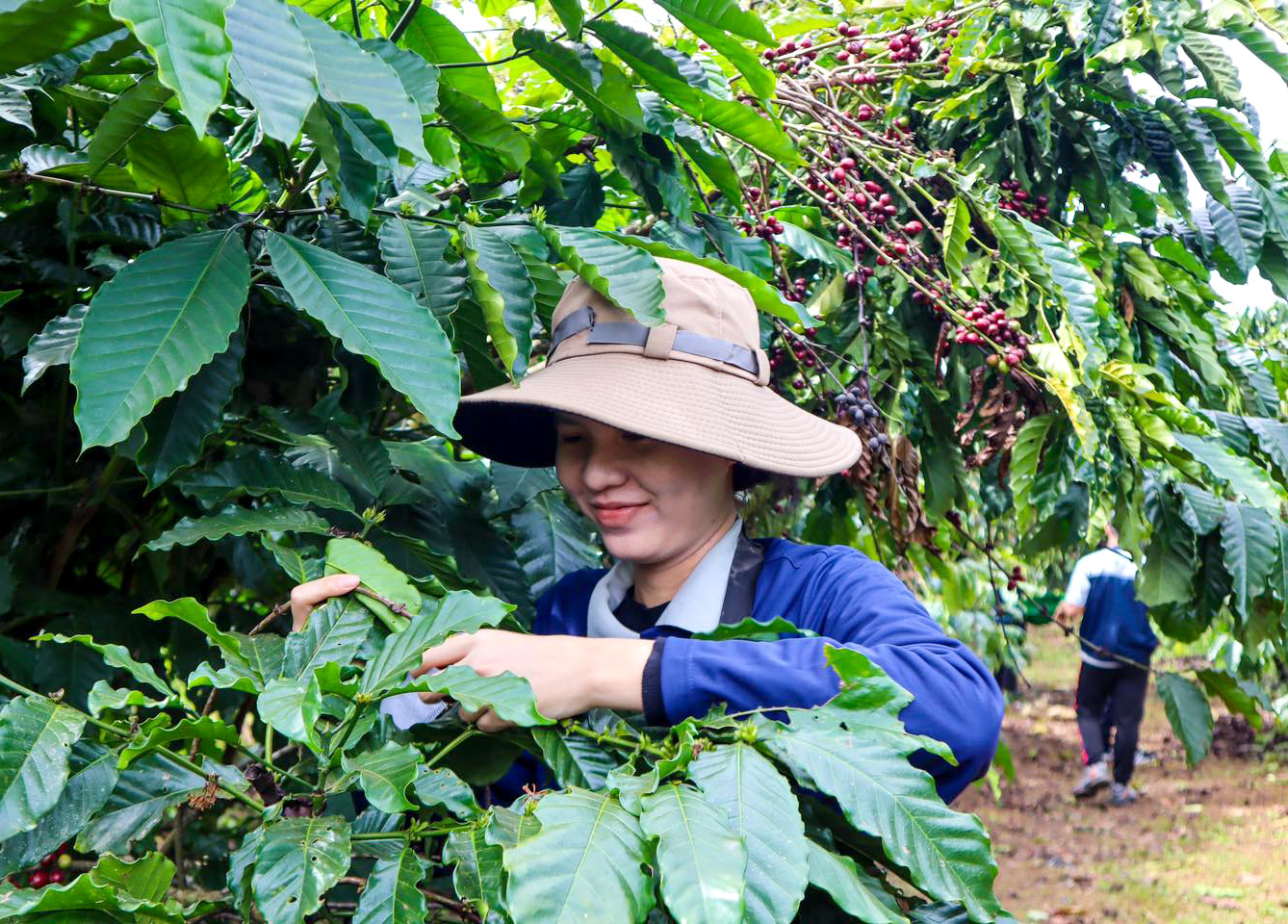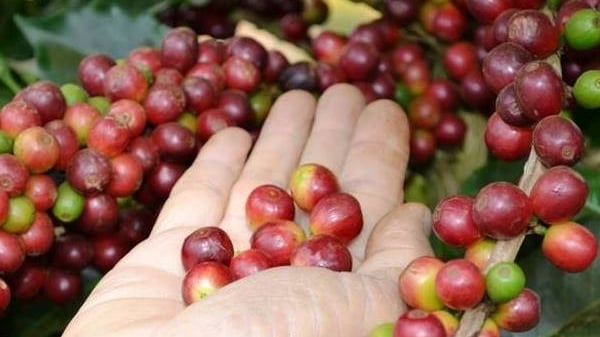June 15, 2025 | 11:37 GMT +7
June 15, 2025 | 11:37 GMT +7
Hotline: 0913.378.918
June 15, 2025 | 11:37 GMT +7
Hotline: 0913.378.918

El Nino may affect coffee production in Vietnam in the next crop year. Photo: Son Trang.
According to the General Department of Vietnam Customs, in July 2023, the average export price of coffee from Vietnam reached a record high of 2,828 USD/ton, an increase of 5.4% compared to June 2023 and a 23.4% increase compared to July 2022. Overall, in the first 7 months of 2023, the average export price of Vietnamese coffee reached 2,418 USD/ton, marking a 7.3% increase compared to the same period last year.
Owing to the substantial price increase, the total export value of coffee continues to rise despite a decrease in export volume. In the first 7 months of 2023, Vietnam's coffee exports reached approximately 1.12 million tons, valued at 2.7 billion USD. This represents a 3.4% decrease in volume but a 3.7% increase in value compared to the same period last year.
Considering the coffee export season from 2022 to 2023 (from October 2022 to September 2023), the total exported coffee volume amounted to 1.5 million tons. Additionally, around 200 thousand tons of coffee are consumed domestically each year. According to estimates from the Vietnam Coffee Cocoa Association (Vicofa), coffee production in Vietnam for the 2022/2023 season decreased to approximately 1.5 million tons due to unfavorable weather conditions and a shift towards other fruit crops, particularly durian, avocado, and passion fruit.
The U.S. Department of Agriculture (USDA) suggests that Vietnam's coffee production for the 2022/2023 season decreased compared to the previous season, but the decline was less severe (6% decrease) and reached 29.7 million bags (60 kg/bag), equivalent to 1.78 million tons.
Therefore, based on various forecasts, it can be concluded that up to this point, coffee inventories in Vietnam are nearly depleted. In fact, some exporters are concerned that there might not be enough coffee to deliver in the second half of this year.
This situation is not unique to Vietnam; the robusta coffee production in other Asian countries like India and Indonesia has also significantly decreased, with declines of up to 20%. The shortage of robusta coffee supply on the global market is evident in the trading prices of this commodity. In the second quarter of 2023, the world price of robusta coffee reached a record high of 2,900 USD/ton.
India and Indonesia, like Vietnam, have encountered a convergence of unfavorable factors that have taken a toll on their coffee yields. A combination of erratic weather patterns, shifts in agricultural priorities, and global supply chain disruptions has contributed to the decline in their coffee production. This shared experience highlights the vulnerability of these economies to climatic and market pressures, emphasizing the interconnectedness of the global coffee trade.
In this complex landscape, collaboration and knowledge-sharing become essential. The experiences of these countries in dealing with declining coffee production can serve as valuable lessons for each other. Strategies to combat the impacts of climate change, enhance production resilience, and diversify agricultural practices are areas where collective learning can make a substantial impact.

Coffee is being dried on a farm in the Central Highlands. Photo: Son Trang.
Regarding the prospects of the 2023/2024 coffee crop, which will begin in October, there are currently conflicting assessments. The USDA predicts that Vietnam's coffee production will increase by 5% to 31.3 million bags due to favorable weather conditions, with rainfall expected to be 10-20% higher than the average level. This increased rainfall will support irrigation and the growth of coffee plants. Additionally, many coffee farms that are entering the harvesting phase will contribute to boosting the average yield of Vietnamese coffee in the 2023/2024 crop. The record-high coffee prices this year also serve as a strong incentive for farmers to enhance their care for coffee plants to achieve higher yields and production.
However, the U.S. Climate Prediction Center has confirmed the return of the extreme weather phenomenon El Nino (hot and dry conditions) with a forecasted intensity ranging from moderate to strong. This poses a threat to the supply of coffee-growing regions, including Vietnam.
The El Nino weather phenomenon is expected to develop globally in the latter part of this year, posing a greater risk to robusta coffee compared to arabica. This weather phenomenon could disrupt precipitation patterns and temperatures, potentially tightening supply and increasing the price of robusta coffee. Analysts and weather experts indicate that the two largest robusta coffee-producing countries in the world, Vietnam and Brazil, could experience significant yield losses if El Nino develops strongly.
According to the International Coffee Organization's (ICO) forecast, the global coffee supply for the 2023/2024 season is projected to fall short by 7.26 million bags compared to demand due to the effects of El Nino causing drought conditions in many coffee-growing regions.
Translated by Nguyen Hai Long

(VAN) Japan will release another 200,000 metric tons of rice from its emergency stockpile to tackle a doubling of prices since last year, Agriculture Minister Shinjiro Koizumi said on Tuesday.

(VAN) Coffee prices on June 13 declined sharply for Arabica. Domestic coffee market in Vietnam dropped by VND 2,000, trading at VND 111,500 – 112,300/kg.

(VAN) Coffee prices on June 12, 2025, continued to fall. Domestically, coffee prices decreased by another VND 2,000, trading at VND 111,500 – 112,300/kg.

(VAN) Coffee prices on June 11, 2025, fell sharply across global markets. Domestic coffee market dropped by VND 700, to the range of VND 113,500 – 114,300/kg.

(VAN) Coffee prices on June 10 2025, rose sharply worldwide for Robusta. Domestic coffee market increased by VND 800, reaching VND 114,200 – 114,800/kg.

(VAN) New FAO forecasts point to record global cereal output with a partial rebound in stocks and trade.

(VAN) Coffee prices on June 9, 2025, in domestic and global markets remain unchanged. Domestic coffee market is currently trading at VND 113,500 – 114,000/kg.